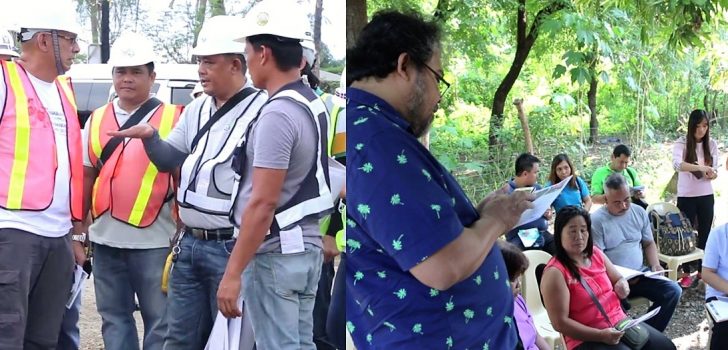
PRDP widens project reach in North Luzon
Now on its midterm of implementation, the Philippine Rural Development Project (PRDP) in North Luzon cluster maintains its progressive growth in establishing a modern, value-chain oriented and climate-resilient agri-fishery sector in the rural community.
A total of 738,060 locals and 57,450 proponent group members have now begun enjoying the benefits from various infrastructure and enterprise interventions under PRDP, as reported through the Project’s online Management Information System (MIS).
“All 22 provinces now have existing infra and enterprise proposals. 21 of these provinces have subprojects approved for PRDP funding,” said Project Support Office (PSO) Luzon A Deputy Project Director Elma Mananes during the plenary session of the World Bank Midterm Review Mission.
Changing the way LGU does planning
Of the 396 municipalities of the cluster, 80 have already signed the Memorandum of Agreement (MOA) with the PRDP implementation.
All 22 PCIPs have been approved by the Provincial Development Council, ten of these have undergone updating, eight are currently being updated and the remaining four are yet to be updated.
Through an encoding session with LGUs, there were 431 non-PRDP funded subprojects identified amounting to P3.6 billion.
“In terms of technical assistance, we have learned a lot from PRDP’s processes, starting from the identification of a project,” said Quirino Governor Junie Cua, who has been engaged with PRDP since its early stages.
Through PRDP, Cua described their planning and project identification process as very systematic, scientific, logic-based, and not political-based.
He added, “it is not a bahala system, where a project may become just a white elephant serving few people only for political reasons.”
Infra support
From 194 subprojects last May mission, PSO North Luzon has now generated a total of 211 subproject proposals across all provinces in the cluster. These proposals amount to P13.3 billion or about 30% of the total Project cost for rural infrastructures.
Out of the total subproject proposals, the cluster has 124 approved SPs worth P4.7 billion, while 87 subprojects are in the pipeline amounting to P8.52 billion.
15 infrastructures have now been successfully completed. This comprises a slope protection in Benguet, mango packaging center in Ilocos Sur, two solar dryers in Ilocos Norte, a farm machinery shed, an Ampalaya packing building, and a onion hanger type in Nueva Ecija, and farm-to-market roads in Isabela (3), Quirino (2), Nueva Ecija (2) and Aurora (1).
“While it’s promising to give money to build a road, it’s another thing to say we’re giving that money to build a road that has an objective and better planning,” said World Bank Task Team Leader Frauke Jungbluth
Lead implementer of enterprises
North Luzon’s I-REAP portfolio continues to lead the implementation of enterprise subprojects on a national scale, with a total of 315 identified subprojects, or 53% of the country’s total SP proposals for I-REAP. These SPs amount to P760.3 million, or about 41% of the country’s enterprise funds under PRDP.
68 of these proposals are under implementation, 112 are under procurement, 26 are pipelined and 109 are completed. These completed SPs are the following: Cattle Fattening and Marketing in Abra (9), Corn and Livestock Integration and Trading Enterprise in Ilocos Norte (1), Custom Service Project and Facilities in Tarlac (7), Farm Machinery Services in Bulacan (4), Zambales (5), Nueva Ecija (2), Farm Mechanization Service Facilities in Ilocos Norte (4), Ilocos Sur (3), La Union (10), Pangasinan (29), Palay Production Enterprises in Cagayan (11), Isabela (20) and Quirino (4).
With the vision of increasing women’s involvement in the rural community, a total of 19,340 women who are proponent group members will be directly benefitting from the approved I-REAP subprojects of the cluster. ### (Kayla Arceo, PSO InfoACE Unit)
